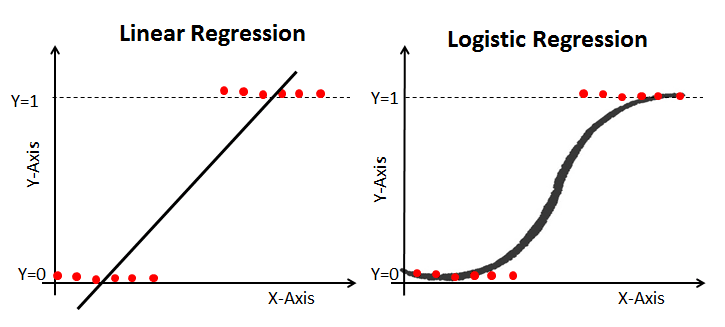# Install the necessary dependencies
import os
import sys
!{sys.executable} -m pip install --quiet pandas scikit-learn numpy matplotlib jupyterlab_myst ipython
4. Logistic Regression#
4.1. Introduction#
When data scientists may come across a new classification problem, the first algorithm that may come across their mind is Logistic Regression. It is a supervised learning classification algorithm which is used to predict observations to a discrete set of classes. Practically, it is used to classify observations into different categories. Hence, its output is discrete in nature. Logistic Regression is also called Logit Regression. It is one of the most simple, straightforward and versatile classification algorithms which is used to solve classification problems.
4.2. Linear Regression Vs. Logistic regression#

Linear regression gives you a continuous output, but logistic regression provides a constant output. An example of the continuous output is house price and stock price. Example’s of the discrete output is predicting whether a patient has cancer or not, predicting whether the customer will churn. Linear regression is estimated using Ordinary Least Squares (OLS) while logistic regression is estimated using Maximum Likelihood Estimation (MLE) approach.
4.3. Types of Logistic Regression#
Logistic Regression model can be classified into three groups based on the target variable categories. These three groups are described below:
Binary Logistic Regression
In Binary Logistic Regression, the target variable has two possible categories. The common examples of categories are yes or no, good or bad, true or false, spam or no spam and pass or fail.
Multinomial Logistic Regression
In Multinomial Logistic Regression, the target variable has three or more categories which are not in any particular order. So, there are three or more nominal categories. The examples include the type of categories of fruits - apple, mango, orange and banana.
Ordinal Logistic Regression
In Ordinal Logistic Regression, the target variable has three or more ordinal categories. So, there is intrinsic order involved with the categories. For example, the student performance can be categorized as poor, average, good and excellent.


